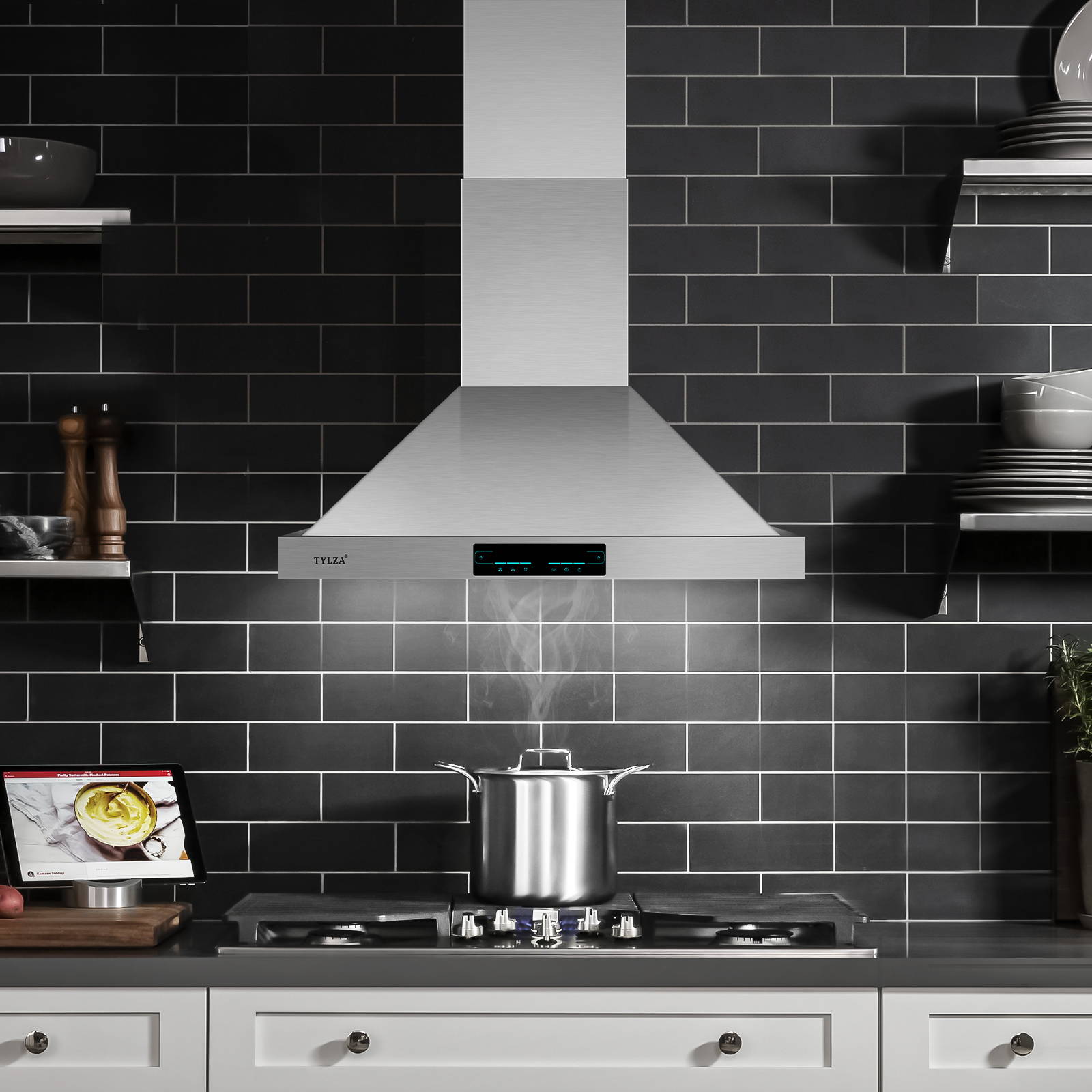What Are The Different Types Of Range Hoods?
Home improvement has thrived over the past few years because of the new styles in the construction industry. In 2021, according to Statista, the total home improvement sales hit USD$538 billion, an increase of about 50.3% from the previous 5 years. It's worth noting that kitchen remodeling dominated these sales. That value is expected to rise even further given that most homes in the U.S. were constructed more than 20 years ago.
If your house is among those constructed in the 20th century, then it’ll need renovating in the near future. One of the things you may want to look at is your kitchen. Apart from renovating, you may need to replace some appliances and in there, such as your range hood.
Studies show that the life expectancy of a range hood is between 13 and 15 years, depending on the type and model. Even with the right maintenance routine, your appliance may start malfunctioning any time beyond that period. If it no longer removes all the smoke, has a few dents, or has a damaged blower, then it might be time to get a new one.
But which one is the best for your remodeled kitchen? Here is a quick look at the different types of range hoods:
1. Under Cabinet Range Hoods
These range hoods are always mounted under the cabinet section just above the cooking appliance. Most of them use the recirculation technique to vent. They suck in the polluted air from the cooking area, filter, and push it out.
The main advantage of under cabinet range hood is the slim design that gives them a discreet, built-in look. This is one of the features that make them the most popular venting appliances. To put this into perspective, under-cabinet range hoods’ revenue share in 2020 was 42.7%, the largest that year.
However, these range hood products often come in small sizes. As such, they may not cover a wide cooking space. Despite their size, they still offer proper ventilation for your everyday cooking.

2. Wall Mount Cabinet Range Hoods

Wall-mount canopy is the second most popular type of range hood installed in U.S. homes. It's ideal for a kitchen that doesn’t have cabinets. But you can also replace a section of your cabinets with this venting appliance.
Do you do a lot of searing, sauntering, or frying on the stovetop? These range hoods would work best in your kitchen because of their powerful venting mechanism. Unlike the under-cabinet type, they have a wider bottom covering a larger cooking space.
One drawback of wall-mount range hood is their inflexibility during installation. Installing them in an already congested kitchen can be challenging. Another disadvantage you should keep in mind is the noisy nature of low-efficiency wall-mount range hoods. But it’s worth noting that this depends on the brand and model.
Another type you might want to consider is an island range hood. It operates like any other range hood by getting rid of grease, odors, and smoke from the kitchen’s atmosphere.
However, its mounting is what differentiates it from the rest. Island range hoods are suspended from the ceiling over an island stovetop. All the ductwork runs through the ceiling and vents outside the house. Given the mounting style, these range hoods are finished on all sides. This makes them somewhat expensive compared with other range hoods.
Most manufacturers design these products as centerpieces in any kitchen. If you’d like to have your stovetop in the middle of the room, you can do that without worrying about the ventilation system. As such, it brings flexibility to your kitchen.


Also known as micro hoods, over-the-range (OTR) hoods are installed below the cabinet. They provide venting and also function as microwave ovens. Therefore, when you install them, you get two functionalities from one appliance. Their size and mounting style ensure that you save space. As such, they’re ideal in kitchens with little room for expansion.
However, the micro hood’s small exhaust fan isn’t designed to adequately vent all the pollutants. As such, air quality may not be as good as expected. Because they’re mounted at a height, they may be hazardous for children and those of short stature, especially when trying to reach for hot content from the microwave.
5. Downdrafts
If you don’t have more space for overhead vent hoods, then downdrafts may be your best bet. They're ideal for open floor plans and kitchen island cooktops. Unlike the rest of the options in the article, these range hoods work by sucking the pollutants before they escape into the air.
Downdrafts are integrated into the cooking surface and can have ductwork leading the smoke and steam outside. They can also be ductless, so they recirculate the air after filtration.
These vent hoods can save a lot of kitchen space, making them ideal for small kitchen areas. They’re also as effective as any overhead vent hood.
However, their nature makes it difficult to install downdrafts in an existing kitchen. In addition, the engine that’s placed under the countertop may limit your storage area.
6. Conclusion
The range hood is one of the main appliances in the kitchen you may need to replace. As such, it’s important to understand the different types of these hoods and find one that’s perfect for you. Under-cabinet, island, wall-mount, and microwave hoods require overhead space. Downdrafts, on the other hand, are integrated into the cooking space. So, choose the best from the list based on your kitchen design.